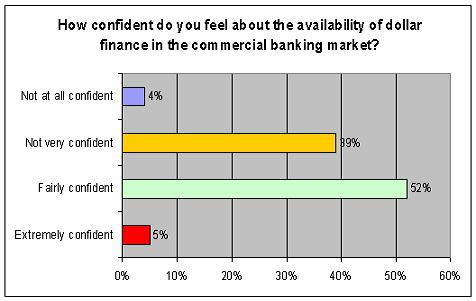A vast majority of airlines and lessors is being forced to secure new, alternative sources of finance to stay in business, according to a new survey by Ascend, part of Flightglobal.
The global aviation sector needs $83 billion to cover 1,500 scheduled jet and turboprop aircraft deliveries this year - but accessing those funds is becoming increasingly difficult.
Ascend's global survey of over 600 aviation finance professionals highlights the problems, particularly in Western aviation markets. It found that 73% of aviation professionals are seeking financing outside their current relationships with banks and established lenders.
Prior to 2008, this level of difficulty in aircraft financing was unthinkable, says Ascend's head of consultancy in Asia, Paul Sheridan. "To enable deliveries to continue, ever more creative financing options are being forced on the industry," he comments.
According to the survey, 72% of airlines said they would be financing their deliveries, both this year and next, with debt - highlighting the importance of access to finance.
The survey found a serious lack of confidence among financiers looking to borrow in US dollars, with 43% of respondents saying they were not very, or not at all confident in its availability. This again is a level of uncertainty previously unseen. "Before 2008, this question would not even have been asked, such was the level of confidence in US dollar availability," Sheridan says.
| Source: Ascend |
|---|
On the subject of government guarantees, the majority of survey respondents believed that borrowers will choose to go to the commercial bank market for finance over using export credit agencies (ECA) supported finance.
Sheridan finds this level of uncertainty and negativity high and probably unnecessary. "ECA financing will account for 35% of global aircraft deliveries this year," he says. "That amounts to somewhere between $25 billion and $28 billion in guarantees. A normal level, indicating a healthy, buoyant market, would be about $10 billion less than that, accounting for around 20% of deliveries."
In seeking creative financing alternatives, respondents said they would turn to Asian financial institutions and capital markets; other capital markets; hedge funds; private debt facilities; and regional and local banks. Half of respondents said they would seek finance on the capital markets - again indicating a shift in lending patterns.
Sheridan explains: "This high percentage shows that airlines and leasing companies are preparing for big changes to their sources of finance. Before 2008, they were well served by European banks and only leasing companies and US airlines tapped the capital markets with any regularity. Now, all airlines and leasing companies should be thinking about it."
| Source: Ascend |
|---|
|
|
|---|
"Asian lenders have always made finance available to local airlines and manufacturers," Sheridan explains. "What is new here are the relationships being forged between Asia and Europe. Increasingly we are providing consultancy services to support this process."
Source: Commercial Aviation Online

























